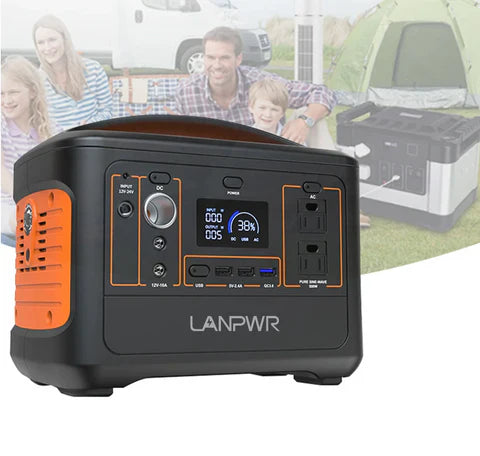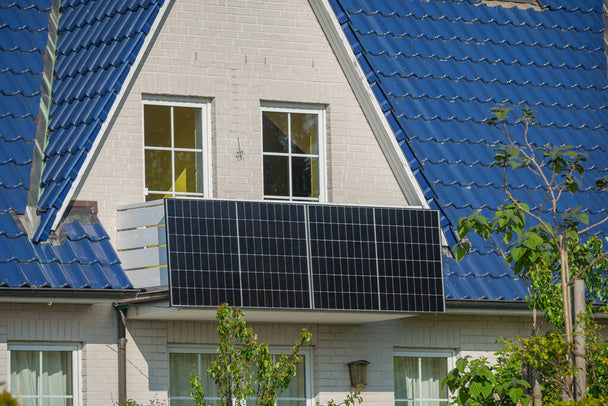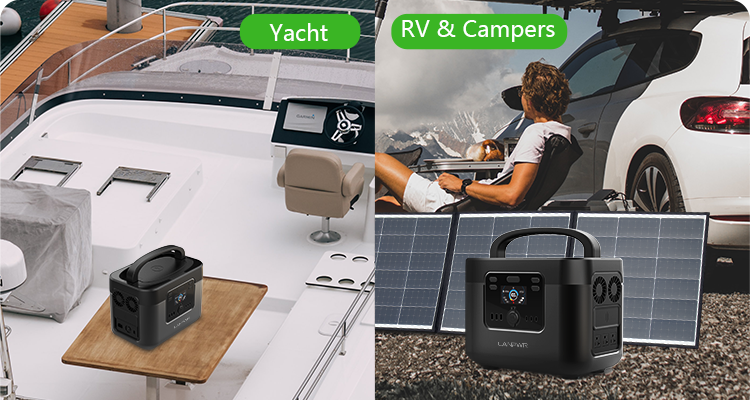Nowadays, being connected and energized is an important aspect whether one is going camping in the wilderness, has his or her phone in the middle of a power cut, or just needs a reliable source of electricity on the go. Portable power stations have been quite popular in providing versatile, convenient, and eco-friendly solutions to these types of needs for power. In this ultimate guide, we will cover the fundamentals of what portable power stations are, how they work, features to look out for, and the very best ways to use them.
What is a Portable Power Station?
A portable power station is a compact, rechargeable battery-powered device used for powering devices and appliances through electricity. It generally features multiple kinds of outlets for AC and DC carports, along with USB ports, for a person to charge or power their electronics, such as a smartphone, laptop, lights, and even small appliances like a mini-fridge.
How do portable power stations work?
Portable Power Stations work based on the idea of storing electrical energy in internal batteries and releasing it to power other devices. This energy can be refilled in a few different ways:
- AC Wall Outlet: Plugging the power station into a standard household socket
- Solar Panels: Using solar panels to collect energy from the sun
- Car Charger: A car's DC output in recharging the power station while on the go
From there, the stored energy is then converted to the appropriate voltage and current type for the connected devices by using built-in inverters and regulators.
Key Features to Consider
Here are some of the key features that you should be looking at when deciding on which portable power supply to buy:
Battery Capacity of the Power Station (in Wh): Measured in watt-hours and defines the quantity of energy that your power station can store. The higher it is, the better, as it provides longer run times for your devices.
Many output options: AC outlets, USB ports, and DC carports to ensure maximum device compatibility. Look for several kinds of ports for different needs.
Inverter Rating (in W): Measured in watts, it defines the maximum power the station can produce at any given time. You want it to match the needs of power your devices require.
Recharge Time: How long it takes to recharge from a wall outlet, solar, and car.
Portability: If the power station has to be carried during outdoor activities, ensure the weight and size are okay.
Durability: A rugged structure with weather-resistant features should be sought for outdoor use.
Expandability: a few models can take extra batteries or solar panels connected in series to enhance capacity and flexibility.
Best Uses
Camping and other outdoorsy activities lights, fans, cooking devices, and other electronic gadgets
Emergency use keeps your devices like mobile phones, medical equipment, and radios running in case power goes off.
Work sites: power tools and equipment in a remote location where the grid is unavailable
Road trips: Power your devices on the go and your smaller appliances in your RVs or camper vans.
Tips on Using a Portable Power Station
Plan your power usage: Calculate the cumulative wattage of the devices you intend to use and make sure the power station can handle that load.
Optimize Charging: Use solar panels during daylight to keep your power station charged without depleting the battery.
Scheduled Maintenance: Keep the battery healthy by charging periodically, even when not in use, in a cool, dry place.
To Prioritize Safety: Do not overload the power station and use it as per the manufacturer's instructions for usage and maintenance.
These are some of the best portable power stations for 2024:
Lanpwr Portable Power Station: Not reviewed so widely as most other brands, but reputed to be one of the cheapest solutions available in the market, with packing in a lot of practical features, several USB and AC points into a portable station, which can take major appliances but for smaller devices and short-term use during camping or a backup in case of an emergency.

Anker SOLIX C1000: A beast in the performance that one can rely upon, the Anker SOLIX C1000 is rated at 1056Wh, with a peak output of 1800W, making it ideal for camping or backup power at home. It will keep many different kinds of appliances alive.
EcoFlow Delta 2: is another highly-rated model that offers super-fast charging and high efficiency. The design, with 1024Wh and 1800W of output, makes it ideal for at-home and off-grid applications. It can be recharged to 80% in just over an hour from a wall outlet.
Jackery Explorer 1000: Plus is a versatile power station with 1,265 watt-hours of power capacity and a 2,000W peak output. Designed to be rugged and reliable at the same time, this is equally great for emergency and outdoor activity.
BougeRV Rover2000: This is a well-noted brand for those with a high potential solar input capacity. Lightweight with 2008 Wh of power, expandable to 8000 Wh, also has many ports for several kinds of equipment. It makes a wonderful device for people who need huge amounts of power on the go.
Goal Zero Yeti 3000X: The Best For Home use to keep the lights on when the power goes out, this power station has a giant 2982Wh capacity, able to power a full-size refrigerator for 55 hours. It is also provided with a mobile app that helps in remote monitoring and a set of many power outlets.
Conclusion
These power stations differ in terms of capacity, output, and, in a way, certain features, so you have to choose one according to your own particular needs be it for home backup in an emergency, camping, or one to use when participating in outdoor activities.
Get your pack of portable power stations from Lanpwr today!














Leave a comment
This site is protected by hCaptcha and the hCaptcha Privacy Policy and Terms of Service apply.